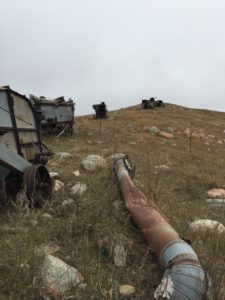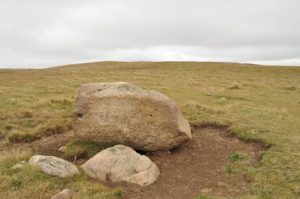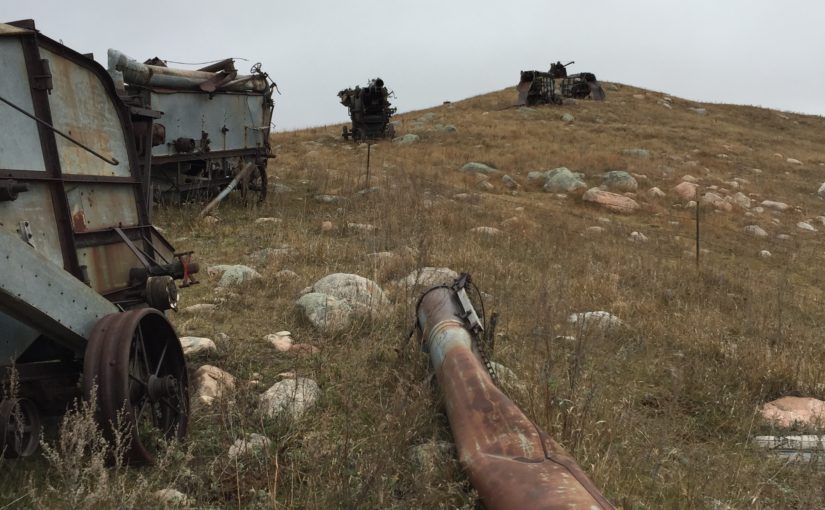It’s easy to lose sense of the scope and scale of the place where you live when you spend most of your time bounded by four walls and the comfort of the indoors. But there’s nothing quite like a little expedition to serve as a reminder of what our prairies are like.


I spent a weekend wandering with some fellow students in the central plains around Napoleon, ND, a place known colloquially as “German-Russian country” since it is populated largely by descendants of ethnic Germans who emigrated from imperial Russia during the late 1800s and early 1900s to escape conscription into the Russian army and the suppression of their religions.
Signs of their impact on the area abound. A crumbling veneer of cement revealed an old house we stumbled across was in fact an earth house built in the Russian style with walls nearly three feet thick held together with clay and straw.
Cemeteries in the area are filled with wrought iron crosses (a hallmark of the German-Russian tradition), which in addition to being symbols of beauty and strength, are much more resistant to wildfires than wooden crosses.
The places we visited were places of memory; the remnants of lives past continue to speak their stories into our day, if we are willing to take the time to learn and listen.
Sometimes a cross is just a cross. But if it has a name attached to it, there is a story somewhere.
And sometimes, something ordinary like a collection of hills in the middle of the plains becomes something more than a nice spot for picnicking on a sunny day. After a conversation with some locals, it becomes Shell Butte, where locals used to go chisel fossilized shells out of the rock to provide their chickens with calcium and minerals to help ensure strong eggs.
The whole countryside is full of little reminders of past lives. A Soo Line railcar sitting at the Logan County Museum in Napoleon speaks of a day when long-distance travel was undertaken by train.
The ghost town of Burnstad speaks of a day when the railroad brought booming business to the area, business that has now faded into the bare hints of foundations and streets.
A line of threshers leading up to the peak of a hill, termed the “dinosaurs on the prairie,” speak of a past era when farming was a little harder than it is now.

And underneath it all, there are reminders that those of us here now are simply newcomers to the plains. Tipi rings serve as a reminder that before German-Russians populated the area, American Indians peopled it. A buffalo rub with the stone worn smooth from serving for countless years as a scratching post for the great beasts of the plains speaks of a time even further back, perhaps even before hunters came to harvest the bounty of the plains.
The land itself, its openness, its stones, speak of a deeper time, of glacial fields and frozen lands uninhabited except for the hardiest creatures of past millennia.
It all serves as a reminder that we, the people who live on the plains, can hardly be called its owners. In fact, it might be exactly the opposite.
The earth house will be folded back into the earth. The thresher will corrode and disintegrate into the landscape. The things that look so permanent now may fall into disrepair, to be seen by future generations as more dinosaurs on the prairie. We, the people, will be returned to the earth.
Whether we now call it German-Russian country, or whether it was in the past Dakota and Nakota territory, the only thing that lasts is the land itself. We leave our little marks on the world, layer upon layer, story upon story to be told to future inhabitants.
As they say: Earth to earth, ashes to ashes and dust to dust.
